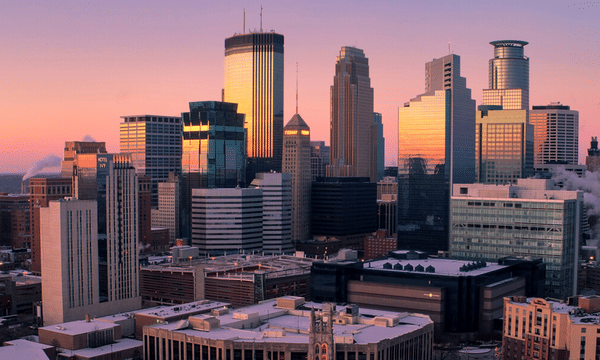The commercial real estate market is faltering and 2 of the biggest players are already feeling the pain
The US commercial real estate market is teetering on the brink of collapse. Rising interest rates, a crippling credit crunch and plummeting demand are pushing down property prices and threatening the stability of the sector. Unless the trend is reversed, the commercial real estate crisis threatens to cause a broader economic shakeout, as 2 of the biggest players have already confirmed.

The US commercial real estate market is facing serious problems. Rising interest rates, tighter lending conditions, and declining demand for commercial space are putting intense pressure on this market.
First, the Federal Reserve is raising interest rates to fight inflation. This means that commercial property owners must refinance their mortgages at a much higher cost. According to Trepp, the volume of commercial mortgages outstanding in the U.S. is about $1.5 trillion. With an average rate increase of 3 percentage points, that would mean an extra $45 billion a year in interest alone.
Second, banks are tightening conditions for new commercial real estate lending. In March, there was a significant credit shock and smaller banks, which fund the vast majority of commercial real estate loans, cut back on lending.
Third, demand for commercial space, particularly offices, is falling. The post-pandemic telecommuting trend continues, limiting the need for firms to expand into commercial space. According to CoStar Group, U.S. commercial real estate sales in the first quarter were down 17% year-over-year from the last five years.
This combined increase in costs, credit constraints and decline in demand leaves the commercial real estate sector vulnerable. Analysts warn that commercial real estate prices could fall 20-40% from their peak and that some properties could face serious financial problems. If that happens, it could trigger broader economic problems because the commercial real estate market is closely linked to the financial system.
The commercial real estate market is showing weakness as evidenced by the pressures facing the two largest players in the market due to rising rates and tighter financing terms 👇
Blackstone $BX, the world's largest commercial real estate owner, has seen a significant decline in distributable earnings as demand for commercial real estate declines. According to the asset manager's latest financial results, net profit from asset sales fell to $4.4 billion for the quarter, down 54% from $9.5 billion in the first quarter of last year.
Meanwhile, another real estate giant Brookfield $BN defaulted on $161 million of commercial real estate debt related to office buildings, Bloomberg reports. A few months earlier, Brookfield defaulted on $784 million of commercial real estate debt backed by two large office skyscrapers in Los Angeles.
The troubles of the two biggest real estate companies thus illustrate a market under pressure from rising interest rates and a recent credit crunch caused by tighter lending conditions as banks pull back after the March turmoil.
Meanwhile, commercial property owners are refinancing maturing commercial mortgages at much higher rates than when they were originated a few years ago. Adding to the fallout has been tighter lending among small and mid-sized regional banks, which finance about 80% of all commercial real estate debt. Overall, about $1.5 trillion of commercial mortgage debt is coming due and will need to be refinanced in the coming years.
While demand for office space is stagnant due to continued work-from-home trends, other areas of the market are also showing signs of stress. For example, apartment building sales have seen the largest decline since 2009, according to data from CoStar Group. Some experts have warned of an impending crash in the commercial real estate market that could mirror the 2008 crisis. Commercial real estate prices could eventually fall 40% from their peak, Morgan Stanley said earlier this month.
Please note that this is not financial advice.